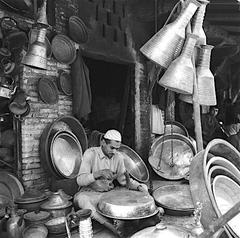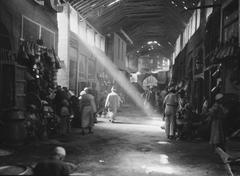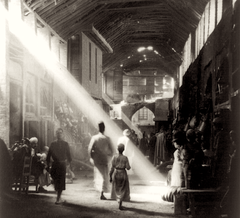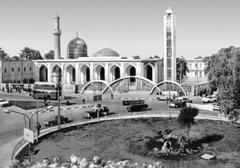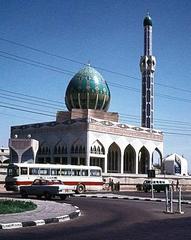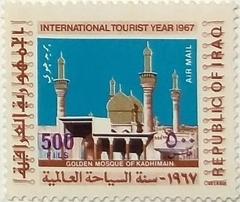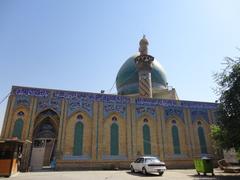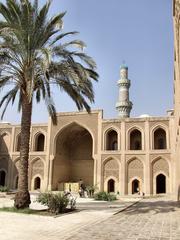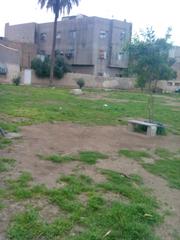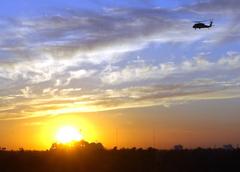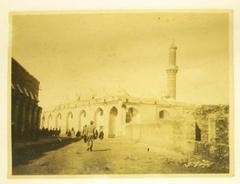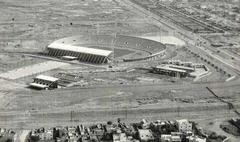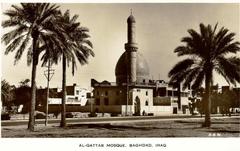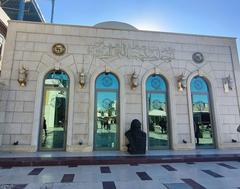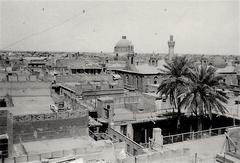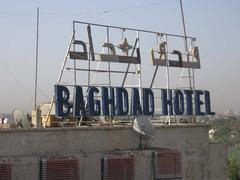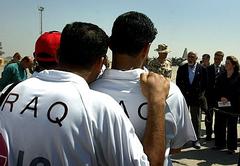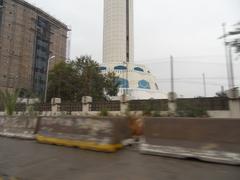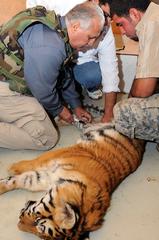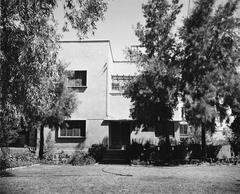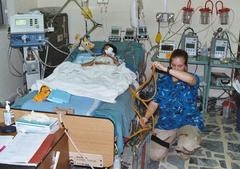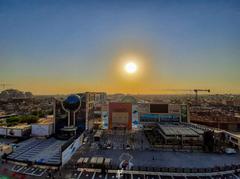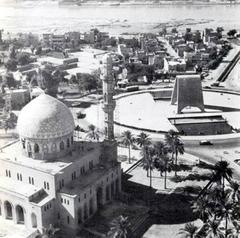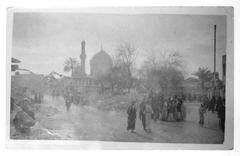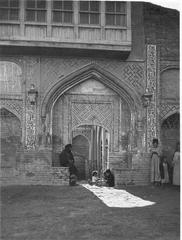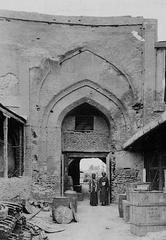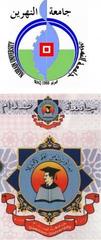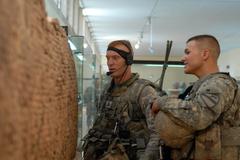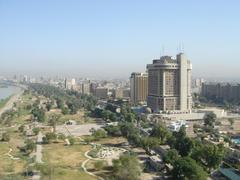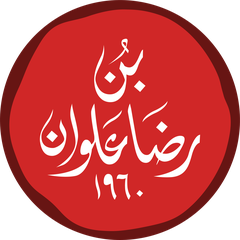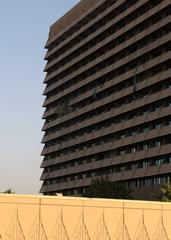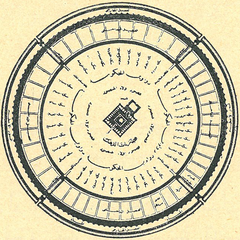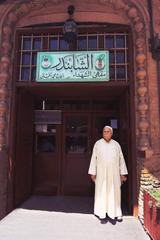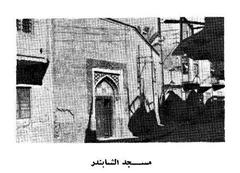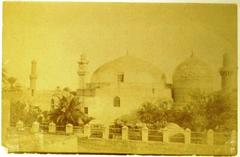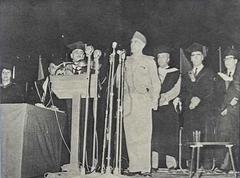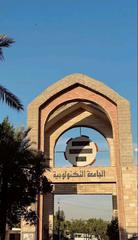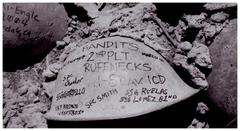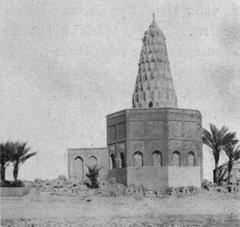
Souq Al-Safafeer Baghdad: Visiting Hours, Tickets, and Complete Guide
Date: 14/06/2025
Introduction: Discover Souq Al-Safafeer – Baghdad’s Living Copper Heritage
Set in the vibrant core of Baghdad, Souq Al-Safafeer, also known as the “Copper Market,” endures as a symbol of Iraq’s artisanal mastery, cultural resilience, and living history. Established in the 9th century CE during the Abbasid era, this souq has long served as a gathering place for skilled coppersmiths—locally called safars—whose handcrafted copperware embodies generations of tradition and artistry. Souq Al-Safafeer’s winding alleys, wooden shop fronts, and the melodic rhythm of hammer on copper create an immersive experience for history enthusiasts, culture seekers, and travelers eager to engage with Baghdad’s authentic heritage.
This guide provides everything you need to plan your visit to Souq Al-Safafeer: up-to-date information on visiting hours, ticketing (with free entry), accessibility, artisan engagement, preservation challenges, insider travel tips, and nearby attractions. Whether you want to observe artisans at work, purchase meaningful souvenirs, or be part of cultural preservation, this guide ensures a rewarding, respectful, and memorable visit. For a deeper historical and cultural context, see Al Jazeera’s feature on Baghdad’s Copper Market and the coverage of Iraqi coppersmithing by EncycloCraftsAPR.
Table of Contents
- Introduction
- History and Evolution of Souq Al-Safafeer
- Visiting Hours, Tickets, and Accessibility
- Cultural and Artistic Significance
- Preservation Challenges and Current Initiatives
- Engaging with Artisans & Supporting the Craft
- Practical Visitor Tips
- Nearby Attractions & Regional Variations
- Security and Local Guidance
- Frequently Asked Questions (FAQ)
- Conclusion
- References
History and Evolution of Souq Al-Safafeer
Origins and Architectural Heritage
Souq Al-Safafeer traces its roots to the Abbasid Caliphate, thriving as a hub for coppersmiths thanks to its location near the Tigris River and the renowned Al-Mustansiriya School. Over centuries, the souq’s architecture evolved—narrow lanes, wooden storefronts, and detailed brickwork echo Baghdad’s urban and artisanal traditions. Specialized alleys historically catered to various crafts, but copperware remained the soul of the market (Al Jazeera, Iraqi News Agency).
The Golden Age and Socioeconomic Role
During the Ottoman period, Souq Al-Safafeer reached its zenith, hosting over 200 coppersmith shops and supplying both everyday utensils and ornate ceremonial pieces across Iraq and beyond. The souq played a key role in Baghdad’s economic and social life, supporting generations of safar families (Al-Monitor).
Modern Decline and Resilience
The late 20th and early 21st centuries brought modernization, war, and economic hardship. The rise of mass-produced imports and the effects of conflict drastically reduced the number of active artisans. Many shops now sell imported goods, but a few determined safars continue to uphold the market’s traditions (The National News).
Visiting Hours, Tickets, and Accessibility
Visiting Hours
- General Hours: Daily, 9:00 AM – 6:00 PM (some sources note activity from 6:00 AM, with most artisan workshops busiest in the morning).
- Best Time to Visit: Early morning, when temperatures are cooler and artisans are actively working. Hours may vary during religious holidays or special events (visitiraqnow.com).
Tickets and Entry
- Entry Fee: None. Souq Al-Safafeer is free to enter, though special workshops or cultural events may request a small donation.
Accessibility
- Location: Centrally located near Al-Maiden Square, close to Al-Mustansiriya School and Al-Rasheed Street.
- Getting There: Accessible by taxi or private car. Public transport is limited for tourists.
- Physical Access: The souq’s narrow, historic alleys can be challenging for those with mobility needs. Visitors requiring assistance should plan ahead or consult local tour operators (HikersBay).
Cultural and Artistic Significance
Souq Al-Safafeer is more than a market—it’s a living museum. Traditional coppersmiths use age-old techniques like hammering, repoussé, and intricate engraving, creating wares adorned with Islamic calligraphy and geometric motifs. The souq’s atmosphere, with its vibrant sounds and hospitality, reflects the fabric of Baghdadi society (EncycloCraftsAPR).
Copperware from Al-Safafeer is integral to Iraqi culture, used in weddings, religious ceremonies, and as heirlooms. The souq itself is a symbol of Baghdad’s creative spirit and resilience, featured in literature, photography, and film.
Preservation Challenges and Current Initiatives
Historical Context and Legal Changes
Once protected under heritage laws, the souq lost significant legal safeguards after 2003, exposing it to neglect and urban decay (Wikipedia, ISVS Journal).
Decline and Threats
- Economic Hardship & Emigration: Many artisans have left due to economic instability and declining tourism (Al Jazeera).
- Loss of Authenticity: Wartime sales and cheap imports threaten the souq’s traditional character.
- Urban Decay: Limited government support and infrastructure issues pose ongoing risks (Iraqi News).
Community and International Efforts
- Grassroots Advocacy: Remaining families and apprentices continue to transmit skills and advocate for renewed support.
- UNESCO and NGOs: Restoration projects and awareness campaigns aim to revitalize the souq as a tourism and heritage site (UNESCO Iraq).
Recommendations for Sustainability
- Governmental backing, urban renewal, heritage programming, marketing, and integration into broader tourism circuits are widely recommended (ISVS Journal).
Engaging with Artisans & Supporting the Craft
Identifying Authentic Copperware
- Hallmarks: Look for heavier weight, visible hammer marks, deep engravings, and quality tin lining.
- Verifying Authenticity: Engage directly with artisans—most are happy to explain their craft and demonstrate techniques (souvenirsideas.com).
Shopping and Custom Orders
- Product Range: Hand-engraved trays, pots, coffee utensils, decorative pieces, and more.
- Custom Engraving: Many artisans offer personalized work for unique souvenirs.
- Bargaining: Polite negotiation is customary; cash in small denominations is preferred.
Responsible Tourism
- Support Local Crafts: Buying directly from artisans sustains the craft and the community.
- Share Your Experience: Posting photos and stories online helps promote the souq and its artisans (Artisans Cooperative, Daisie Blog).
- Attend Workshops: Participate in heritage events to support skills transmission and cultural continuity.
Practical Visitor Tips
- Best Time: Arrive early for vibrant activity and cooler weather.
- Dress Code: Modest clothing in lightweight fabrics is recommended.
- Language: Arabic is primary; some vendors speak basic English. Learning a few phrases or hiring a guide is helpful.
- Photography: Encouraged, but always seek permission before photographing artisans.
- Transport: Use taxis and agree on fares in advance.
- Safety: Security has improved, but remain aware. Local guides can assist with navigation and checkpoints (AgainstTheCompass).
Nearby Attractions & Regional Variations
- Al-Mustansiriya School: A medieval Islamic university with striking architecture.
- Al-Rasheed Street: Historic thoroughfare with shops, cafes, and cultural landmarks.
- Other Markets: Similar coppersmith markets exist in Basra and Hilla, each with unique regional styles (visitiraqnow.com).
Security and Local Guidance
Expect checkpoints in Baghdad; having a local guide or contact can ease passage and provide valuable insights. Remain respectful and prepared with identification and any required documents (AgainstTheCompass).
Frequently Asked Questions (FAQ)
Q: What are the visiting hours of Souq Al-Safafeer?
A: Generally 9:00 AM to 6:00 PM daily; some activity starts as early as 6:00 AM. Check local updates for holiday variations.
Q: Is there an entry fee?
A: No, entry is free. Some workshops or events may charge a small fee.
Q: Can I buy authentic copperware?
A: Yes, especially from workshops and artisans who can demonstrate their techniques.
Q: Are guided tours available?
A: Yes, several local operators and cultural organizations offer guided tours—booking in advance is advised.
Q: Is the souq accessible for visitors with disabilities?
A: Accessibility is limited due to narrow, historic alleys, but improvements are in progress.
Q: How do I get there?
A: Best reached by taxi or private car; public transport is limited for tourists.
Conclusion: Experience and Help Preserve Baghdad’s Living Heritage
Souq Al-Safafeer is not just a marketplace—it’s a living testimony to Baghdad’s artistry, resilience, and community. By visiting during its open hours, engaging respectfully with artisans, and purchasing authentic copperware, you become part of sustaining this invaluable cultural treasure. Exploring nearby historical sites further enriches your journey, offering a holistic picture of Baghdad’s intellectual and commercial legacy.
Whether you’re a traveler, history buff, or advocate for cultural preservation, Souq Al-Safafeer invites you to immerse yourself in its storied alleys and be a steward of Iraq’s living heritage.
References
- Baghdad’s Copper Market Faces Uncertain Future, 2019, Al Jazeera
- Al-Safar Coppersmithing, 2024, EncycloCraftsAPR
- Baghdad’s Copper Market Faces Extinction, 2022, Iraqi News Agency
- Baghdads Copper Market Faces Extinction, 2022, Al-Monitor
- Baghdad’s Copper Market Faces Uncertain Future, 2022, The National News
- UNESCO Iraq Heritage Preservation, 2024, UNESCO Iraq
- Souvenirs From Iraq - Authentic Copperware Guide, 2024, SouvenirsIdeas
- Souq Al-Safafeer Market: A Glimpse into Baghdad’s Cultural Heart, 2023, Iraqi News
- Baghdad’s Coppersmith Souk: A Fading Cultural Treasure, 2018, Al Jazeera
- Souq Al-Safafeer: Historical and Cultural Perspectives, 2023, ISVS Journal
- Baghdad Tourist Information, 2024, HikersBay
- Travel Iraq Federal: Safety and Guidance, 2024, AgainstTheCompass
- 10 Ways to Support Your Local Artisans, 2024, Artisans Cooperative
- 5 Practical Tips to Support Local Artisans in Your Community, 2024, Daisie Blog
